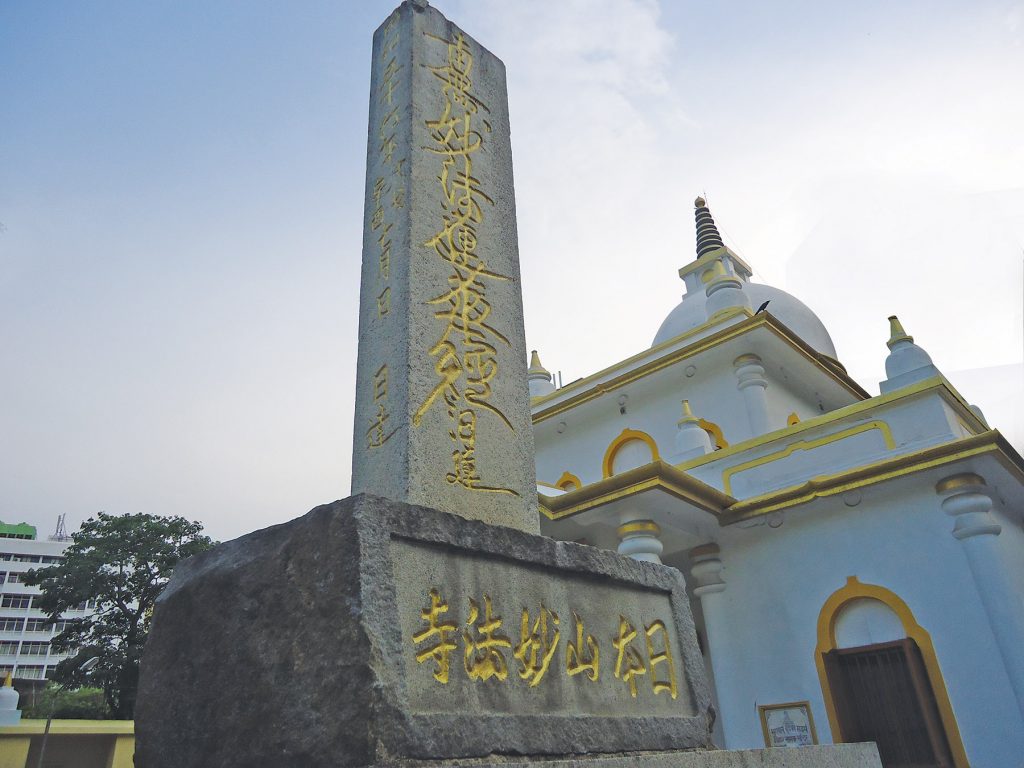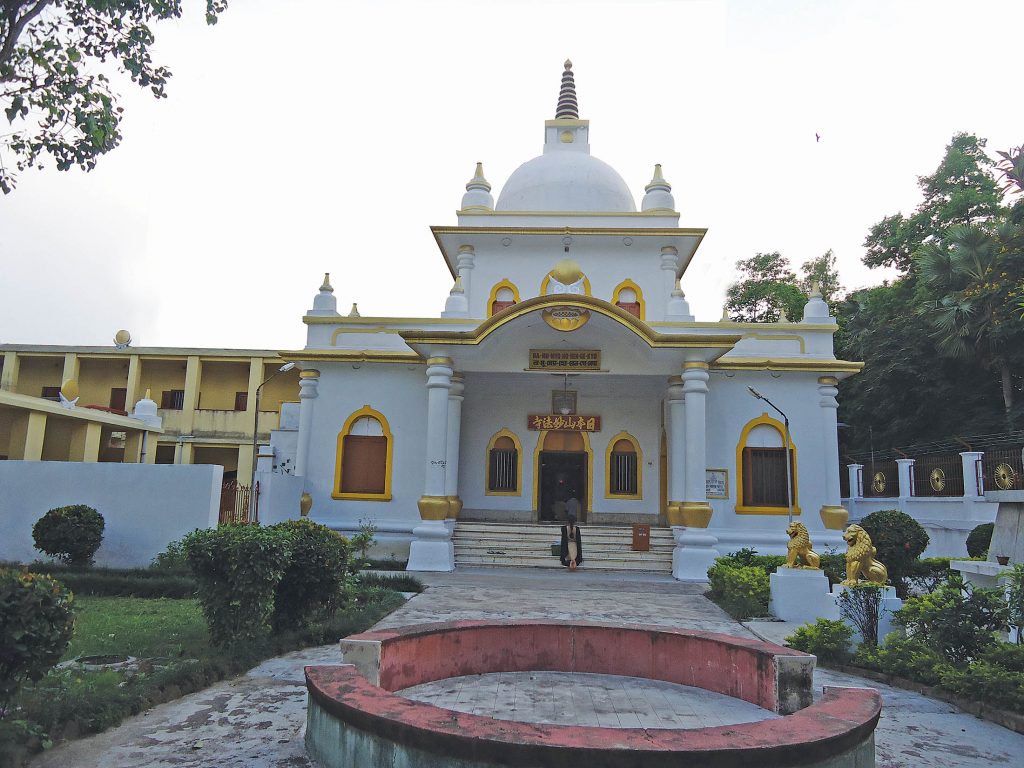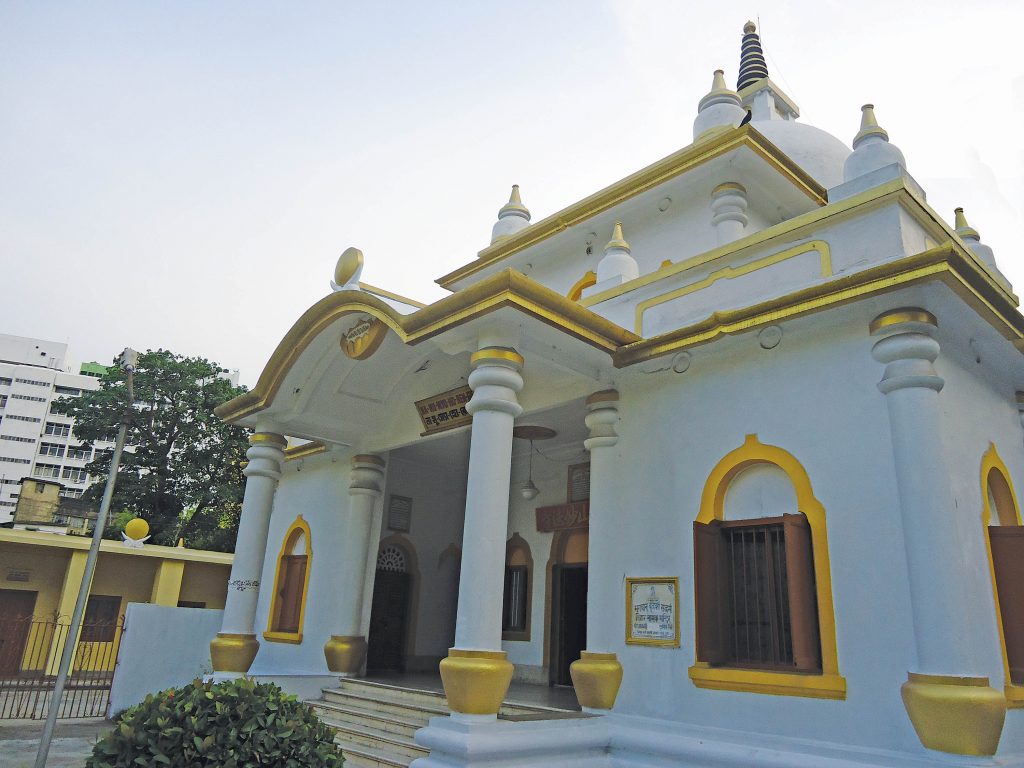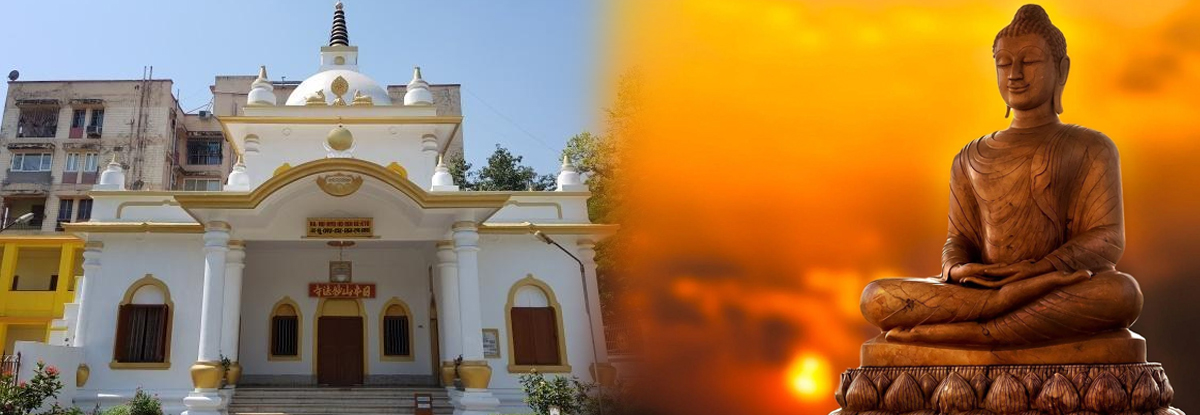KOLKATAʼS OWN BUDDHIST TEMPLE
Om Mani Padme Hum

Buddhism is a world religion. It came into prominence in the ancient Kingdom of Magadha, now in Bihar, and is based on the teachings of Siddhartha Gautama who was deemed a Buddha or Awakened One. Buddhism slowly began to spread outside of Magadha from the Buddhaʼs lifetime itself. Gautama Buddha was born in Lumbini in present-day Nepal, to a chieftain of Kapilavastu ‒ Suddhodana. After asceticism and meditation which was a Samana practice, the Buddha discovered the Buddhist Middle Way ‒ a path of moderation away from the extremes of self-indulgence and self-mortification. Siddhartha Gautama attained enlightenment sitting under a pipal tree, now known as the Bodhi tree in Bodh Gaya.

He found patronage in the ruler of Magadha, Emperor Bimbisara, who accepted Buddhism as a personal faith and allowed the establishment of many Buddhist Viharas or monasteries in his kingdom. During the reign of the Mauryan Emperor Ashoka, the Buddhist community split into two branches ‒ the Mahasamghika and the Sthaviravada, each of which spread throughout India and further fragmented into numerous sub-sects. In modern times, two major branches of Buddhism exist, the Hinayana in Sri Lanka and Southeast Asia, and the Mahayana throughout the Himalayas and East Asia.

The practice of Buddhism as a distinct and organised religion lost influence after the Gupta reign in the seventh century and declined from India around the thirteenth century, but not without leaving a significant impact. Today, as a religion, Buddhism is seeing a global revival. The only Japanese Buddhist Vihara in Kolkata is located on the southern fringe of the Rabindra Sarovar. Known as the Nipponzan Myohoji or the Japan Buddha Sangha temple, it was established in 1935 by Nichidatsu Fujii, founder of the worldwide Buddhist association, the Nipponzan Myohoji. The Niching sect of Japanese Buddhism landed in Kolkata on 16 January 1931. The temple was completed by February, 1935.

Monks offer prayers in Japanese, to the sound of beating drums, in the early morning hours and at dusk. There are no restrictions on entry to the main temple even when prayers are in progress. Outside the main temple building there is a pillar, with a message of peace engraved in Japanese, and a pair of lions that symbolise the guardians of the faith. The Japanese refer to these figures as Komainu or the fabled lion-dog.

